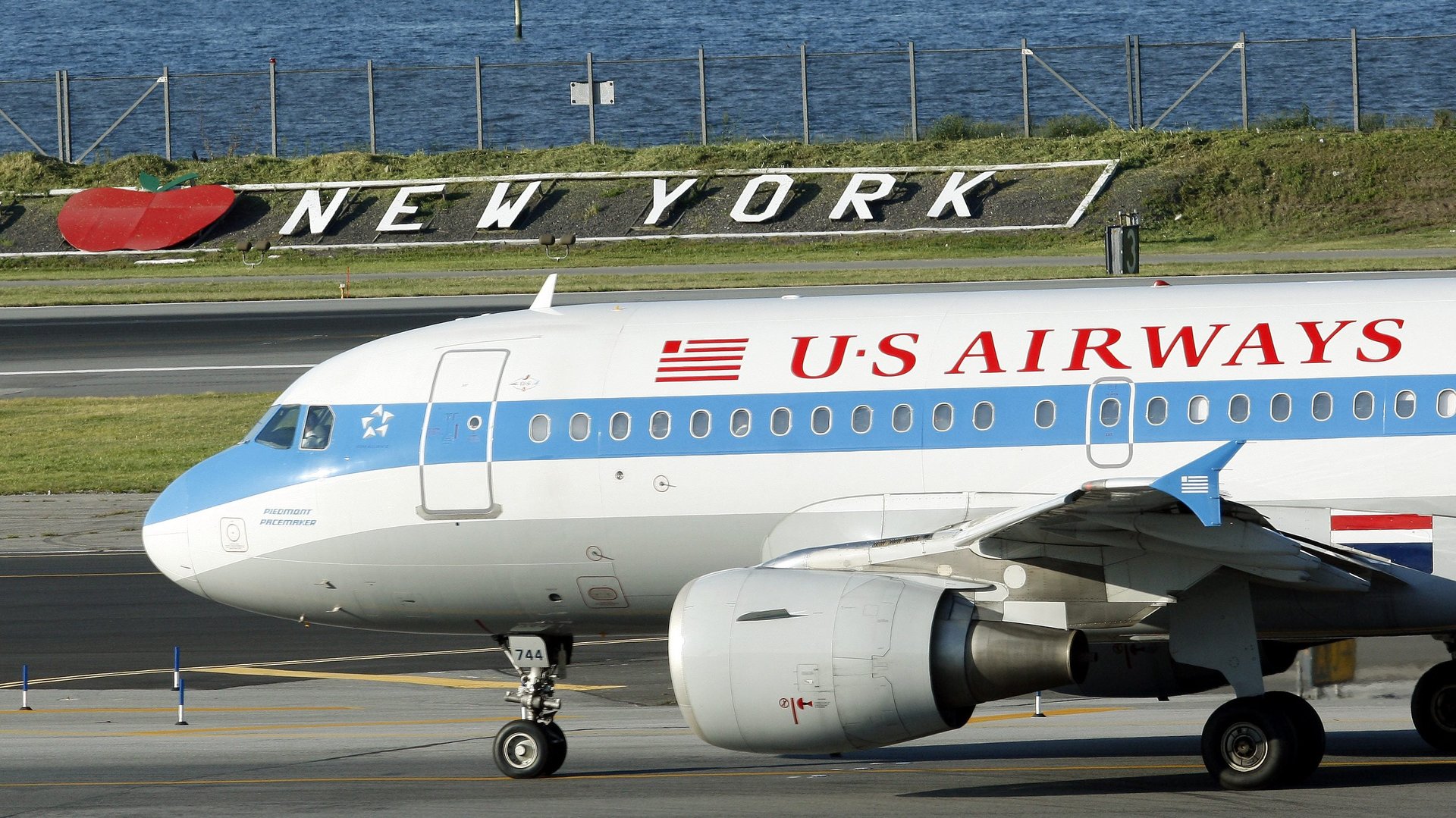If you live within a mile of these 50 US airports, you won’t get real 5G in January
For months, US airline regulators have been sparring with cell carriers over the looming rollout of a new version of 5G, which operates on so-called “C-band” frequencies. C-band connections promise noticeably faster service for smartphone users, but the aviation industry worries that the new networks will interfere with crucial airplane instruments like altimeters.


For months, US airline regulators have been sparring with cell carriers over the looming rollout of a new version of 5G, which operates on so-called “C-band” frequencies. C-band connections promise noticeably faster service for smartphone users, but the aviation industry worries that the new networks will interfere with crucial airplane instruments like altimeters.
AT&T and Verizon are set to debut their new C-band networks in 46 US markets this month, after paying $70 billion to secure the rights to the frequency and spending billions more to build out new cell towers. Originally, they planned to launch their networks on Jan. 1, but pushed the start date back to Jan. 19 in response to a last-minute request from US regulators.
On Jan. 2, regulators and telecom giants reached an agreement (pdf): When AT&T and Verizon debut their C-band 5G connections on Jan. 19, they won’t offer service within about a mile of 50 major US airports. If you live or work within an airport buffer zone, you may not be covered for at least another six months. The cell carriers have promised to maintain their C-band buffers until July 5.
The C-band 5G controversy, explained
Cell carriers launched 4G networks in 2008, which would soon power the data-hungry apps that defined the way people use smartphones. But 4G networks aren’t fast enough to support applications like hosting meetings in virtual reality, streaming video games without a console, or whatever the metaverse does. The new 5G C-band service is designed to solve that problem.
You can think of C-band as the Goldilocks spectrum, a middle ground between two existing 5G frequencies: Low-band 5G frequencies—which your phone may already connect to—have plenty of range, but aren’t noticeably faster than 4G. High-band millimeter-wave 5G promises speeds up to 80 times faster than 4G, but has about as much range as a public wifi hotspot.
C-band, which sits in between low- and high-band frequencies, promises download speeds up to 10 times faster than the most advanced 4G connections, with enough range that a network of cell towers could realistically cover an entire city. In short, C-band service is the version of 5G that is fast enough and has enough range to meaningfully change the way people use their smartphones.
But airlines worry that C-band networks, which operate in a frequency range between 3.7 and 3.98 gigahertz (GHz), will interfere with airplane instruments like altimeters, which operate in a neighboring frequency range between 4.2 and 4.4 GHz. To placate airline regulators, AT&T and Verizon have agreed to create a C-band “buffer zone” around 50 airports. The cell carriers won’t operate C-band cell towers within 1.3 miles (2100 m) of the end of any runway. They’ll offer reduced C-band speeds for an additional 0.3 miles (540 m) beyond that.
The US Federal Aviation Administration released the list of airports with buffer zones on Jan. 7. It includes global hubs like New York’s LaGuardia Airport, Chicago O’Hare, and Los Angeles International Airport alongside smaller regional hubs like the Greater Rochester International Airport and the Orlando International Airport. There are a few notable omissions, including Hartsfield-Jackson in Atlanta and Boston Logan International Airport, in cities that either won’t get C-band 5G this month or have 5G towers that are so far away from runways that there’s no need for a buffer zone.
LaGuardia’s airport buffer zone covers part of Queens
In densely cities like New York, where residential areas are close to airports, the C-band buffer zones will prevent people in from accessing faster 5G at home. The LaGuardia airport buffer will affect Queens residents who live in parts of Astoria Heights, Jackson Heights, and Flushing, plus anyone going to a Mets game at Citi Field or working in or visiting the prison on Rikers Island. (Incarcerated people aren’t allowed to have phones.)
Las Vegas’s airport buffer zone covers parts of the Vegas Strip
In Las Vegas, the C-band buffer zone partially covers the casinos on the Vegas Strip. Guests at the MGM Grand, Tropicana, Luxor, or Mandalay Bay will only have access to a low-power C-band connection that is at least 30% weaker than a full-strength network. Gamblers probably won’t notice the difference: Electronics are banned at casino tables, and the walls of most casinos are so thick that they block cell service anyway.
San Jose’s airport buffer zone covers Intel, Oracle, and NVIDIA offices
On some of Silicon Valley’s corporate campuses, full C-band coverage won’t be available. The footprints of Oracle, Intel, Ebay, and NVIDIA offices straddle the low power zone. PayPal is entirely within in the low-power area and the soccer stadium it sponsors, PayPal Park, is fully inside the exclusion zone.